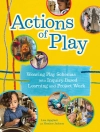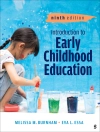It is widely accepted that listening to and involving children in decisions about their care, learning and development can significantly improve the quality of early years provision. This book gives practical guidance on how to do this effectively.
Starting with a discussion about why we listen to children and the policies around this, the book explains how we can involve children in decision-making that is appropriate to their age and level of understanding. Packed full of examples and ideas that can be easily applied in practice, it covers how to listen to children’s perspectives and involve them in staff recruitment and appraisals, classroom design, assessment processes for social services and EHC plans, and much more.
Daftar Isi
Introduction. Section One. 1. What Is Listening to Children? 2. Policy of Listening to Children. 3. The Consequences When We Don’t Listen. Section Two. 4. Children’s Voice in Recruitment. 5. Children’s Voice in Transition. 6. Children’s Voice in Learning and Planning. 7. Children’s Voice in Redesigning Classrooms. 8. Children’s Voice in Community Spaces. 9. Children’s Voice in Assessment. 10. Children’s Voice in Family Support. Conclusion.












